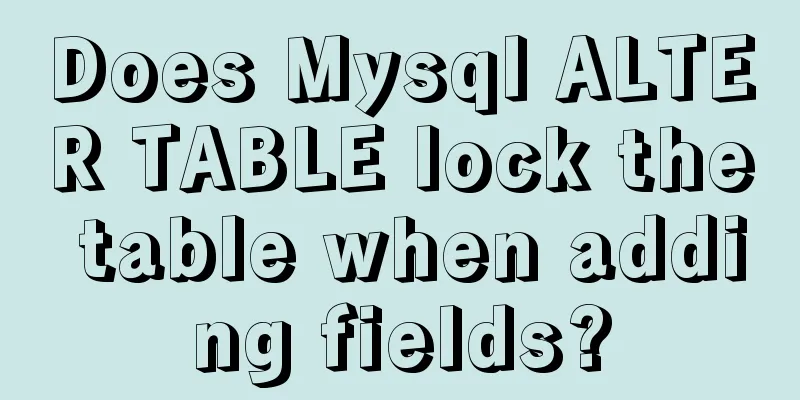Vue+Websocket simply implements the chat function

|
This article shares the specific code of Vue+Websocket to simply implement the chat function for your reference. The specific content is as follows Effect picture:
Chat Room This article is a simple understanding and application of Websocket , which is implemented by simply building a server using Nodejs . First create a vue project Then create a server folder, open the folder on the terminal, type vue init (keep pressing the "Enter" key), and finally create a server.js file, as shown below
The code is as follows: server.js / In the server file terminal, run npm install --s ws
var userNum = 0; //Count the number of online users var chatList = []; //Record chat history var WebSocketServer = require('ws').Server;
wss = new WebSocketServer({ port: 8181 }); //8181 corresponds to the front end //Call broadcast to achieve data intercommunication and real-time update wss.broadcast = function (msg) {
wss.clients.forEach(function each(client) {
client.send(msg);
});
};
wss.on('connection', function (ws) {
userNum++; //Connection established successfully, number of people online +1
wss.broadcast(JSON.stringify({ funName: 'userCount', users: userNum, chat: chatList })); //Successful connection broadcasts the number of people currently online console.log('Connected clients:', userNum);
//Receive data sent by the front end ws.on('message', function (e) {
var resData = JSON.parse(e)
console.log('Received a message from clent:' + resData.msg)
chatList.push({ userId: resData.userId, content: resData.msg }); //Every time a message is sent, it will be stored and then broadcasted, so that each user who comes in can see the previous data wss.broadcast(JSON.stringify({ userId: resData.userId, msg: resData.msg })); //Each message sent is equivalent to broadcasting a message });
ws.on('close', function (e) {
userNum--; //Establish connection and close the number of people online - 1
wss.broadcast(JSON.stringify({ funName: 'userCount', users: userNum, chat: chatList })); //Establish connection and close broadcast once. Current number of online clients console.log('Connected clients:', userNum);
console.log('Long connection is closed')
})
})
console.log('Server created successfully')Then npm run start to start the server
HelloWorld.vue (front-end page)
<template>
<div class="chat-box">
<header>Number of people in chat room: {{count}}</header>
<div class="msg-box" ref="msg-box">
<div
v-for="(i,index) in list"
:key="index"
class="msg"
:style="i.userId == userId?'flex-direction:row-reverse':''"
>
<div class="user-head">
<div
class="head"
:style="` background: hsl(${getUserHead(i.userId,'bck')}, 88%, 62%); clip-path: polygon(${getUserHead(i.userId,'polygon')}% 0,100% 100%,0% 100%); transform: rotate(${getUserHead(i.userId,'rotate')}deg)`"
></div>
</div>
<div class="user-msg">
<span
:style="i.userId == userId?' float: right;':''"
:class="i.userId == userId?'right':'left'"
>{{i.content}}</span>
</div>
</div>
</div>
<div class="input-box">
<input type="text" ref="sendMsg" v-model="contentText" @keyup.enter="sendText()" />
<div class="btn" :class="{['btn-active']:contentText}" @click="sendText()">Send</div>
</div>
</div>
</template>
<script>
export default {
data() {
return {
ws: null,
count: 0,
userId: null, //Current user ID
list: [], //array of chat records contentText: "" //input value};
},
created() {
this.getUserID();
},
mounted() {
this.initWebSocket();
},
methods: {
//Use the timestamp as the current user ID
getUserID() {
let time = new Date().getTime();
this.userId = time;
},
//Generate a random avatar based on userID getUserHead(id, type) {
let ID = String(id);
if (type == "bck") {
return Number(ID.substring(ID.length - 3));
}
if (type == "polygon") {
return Number(ID.substring(ID.length - 2));
}
if (type == "rotate") {
return Number(ID.substring(ID.length - 3));
}
},
//Scroll bar to the bottom scrollBottm() {
let el = this.$refs["msg-box"];
el.scrollTop = el.scrollHeight;
},
//Send chat message sendText() {
let _this = this;
_this.$refs["sendMsg"].focus();
if (!_this.contentText) {
return;
}
let params = {
userId: _this.userId,
msg: _this.contentText
};
_this.ws.send(JSON.stringify(params)); //Call WebSocket send() to send information _this.contentText = "";
setTimeout(() => {
_this.scrollBottm();
}, 500);
},
//Enter the page to create a websocket connection initWebSocket() {
let _this = this;
//Judge whether there is a websocket connection on the page if (window.WebSocket) {
// 192.168.0.115 is my local IP address. Here, the port number should be consistent with the backend configuration. let ws = new WebSocket("ws://192.168.0.115:8181");
_this.ws = ws;
ws.onopen = function(e) {
console.log("Server connection successful");
};
ws.onclose = function(e) {
console.log("Server connection closed");
};
ws.onerror = function() {
console.log("Server connection error");
};
ws.onmessage = function(e) {
//Receive data returned by the server let resData = JSON.parse(e.data);
if (resData.funName == "userCount") {
_this.count = resData.users;
_this.list = resData.chat;
console.log(resData.chat);
} else {
_this.list = [
..._this.list,
{ userId: resData.userId, content: resData.msg }
];
}
};
}
}
}
};
</script>
<style lang="scss" scoped>
.chat-box {
margin: 0 auto;
background: #fafafa;
position: absolute;
height: 100%;
width: 100%;
max-width: 700px;
header {
position: fixed;
width: 100%;
height: 3rem;
background: #409eff;
max-width: 700px;
display: flex;
justify-content: center;
align-items: center;
font-weight: bold;
color: white;
font-size: 1rem;
}
.msg-box {
position: absolute;
height: calc(100% - 6.5rem);
width: 100%;
margin-top: 3rem;
overflow-y: scroll;
.msg {
width: 95%;
min-height: 2.5rem;
margin: 1rem 0.5rem;
position: relative;
display: flex;
justify-content: flex-start !important;
.user-head {
min-width: 2.5rem;
width: 20%;
width: 2.5rem;
height: 2.5rem;
border-radius: 50%;
background: #f1f1f1;
display: flex;
justify-content: center;
align-items: center;
.head {
width: 1.2rem;
height: 1.2rem;
}
// position: absolute;
}
.user-msg {
width: 80%;
// position: absolute;
word-break: break-all;
position: relative;
z-index: 5;
span {
display: inline-block;
padding: 0.5rem 0.7rem;
border-radius: 0.5rem;
margin-top: 0.2rem;
font-size: 0.88rem;
}
.left {
background: white;
animation: toLeft 0.5s ease both 1;
}
.right {
background: #53a8ff;
color: white;
animation: toright 0.5s ease both 1;
}
@keyframes toLeft {
0% {
opacity: 0;
transform: translateX(-10px);
}
100% {
opacity: 1;
transform: translateX(0px);
}
}
@keyframes toright {
0% {
opacity: 0;
transform: translateX(10px);
}
100% {
opacity: 1;
transform: translateX(0px);
}
}
}
}
}
.input-box {
padding: 0 0.5rem;
position: absolute;
bottom: 0;
width: 100%;
height: 3.5rem;
background: #fafafa;
box-shadow: 0 0 5px #ccc;
display: flex;
justify-content: space-between;
align-items: center;
input {
height: 2.3rem;
display: inline-block;
width: 100%;
padding: 0.5rem;
border: none;
border-radius: 0.2rem;
font-size: 0.88rem;
}
.btn {
height: 2.3rem;
min-width: 4rem;
background: #e0e0e0;
padding: 0.5rem;
font-size: 0.88rem;
color: white;
text-align: center;
border-radius: 0.2rem;
margin-left: 0.5rem;
transition: 0.5s;
}
.btn-active {
background: #409eff;
}
}
}
</style>192.168.0.115 is my local IP address (the default is localhost), you can change it to your own
Then run npm run dev , and you can chat on the LAN. If you have wireless, you can use your mobile phone to connect to the wireless to access your IP address. If not, you can try opening a few more windows and you can see the effect! ! The server prints logs when entering a chat room and sending messages The above is the full content of this article. I hope it will be helpful for everyone’s study. I also hope that everyone will support 123WORDPRESS.COM. You may also be interested in:
|
<<: Solve the problem that PhpStorm fails to connect to VirtualBox
>>: Mysql transaction isolation level principle example analysis
Recommend
UCenter Home site adds statistics code
UCenter Home is an SNS website building system rel...
Using css-loader to implement css module in vue-cli
【Foreword】 Both Vue and React's CSS modular s...
Let’s talk about the symbol data type in ES6 in detail
Table of contents Symbol Data Type The reason why...
npm Taobao mirror modification explanation
1. Top-level usage 1. Install cnpm npm i -g cnpm ...
HTML+CSS to create heartbeat special effects
Today we are going to create a simple heartbeat e...
Detailed explanation of VueRouter routing
Table of contents vue router 1. Understand the co...
LayUI+Shiro implements a dynamic menu and remembers the example of menu expansion
Table of contents 1. Maven Dependency 2. Menu rel...
Analysis of the reasons why Vue3 uses Proxy to implement data monitoring
Vue data two-way binding principle, but this meth...
Front-end development general manual (including tools, websites, experience, etc.)
Today I have nothing to do, so I listed some tool...
SQL group by to remove duplicates and sort by other fields
need: Merge identical items of one field and sort...
Optimize MySQL with 3 simple tweaks
I don't expect to be an expert DBA, but when ...
Detailed explanation of how to upgrade software package versions under Linux
In the Linux environment, you want to check wheth...
CSS perfectly solves the problem of front-end image deformation
I saw an article in Toutiao IT School that CSS pe...
A brief analysis of MySQL's WriteSet parallel replication
【Historical Background】 I have been working as a ...
How to set and get the number of Mysql connections
Get the number of connections --- Get the maximum...













